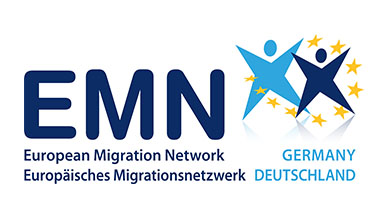Intra-EU mobility of third-country nationals ,
 Source: BAMF
Source: BAMF
The present study is the German contribution to a comparative project of the European Migration Network (EMN) examining migratory movements by third-country nationals within the European Union (EU). As such, the report focuses on the immigration to Germany of third-country nationals who were initially resident for a prolonged period in another EU member state.
The first section of the study presents the legal basis for immigration by third-country nationals and discusses what specific provisions apply to immigration from other EU member states. In this context, the residence permits and purposes based on the EU-acquis are presented which have been established on the basis of the directive on long-term residents, the Researcher Directive, the Directive on Highly Qualified Workers and the Student Directive. In addition, the extent to which classic (exclusively national) residence permits can be used for the purposes of internal migration is discussed.
In the second section, the study provides a statistical overview of the extent of internal mobility among third-country nationals: It emerges that this mobility takes place for the most part using national residence permits, rather than residence titles based on the EU acquis. Spain and Italy head the list of EU states from which immigration takes place; the majority of third-country nationals immigrating to Germany from other EU member states are Indians, Turks, Moroccans and Ghanaians.
The total number of third-country nationals immigrating from EU members states has been subject to a continually rising trend in recent years; the annual number of immigrants doubled from 2007 to 2011, whereby only an extremely minimal fraction of this increase is attributable to the new residence permits established under the above mentioned EU directives.
Study compiled by: Dr. Andreas Müller

